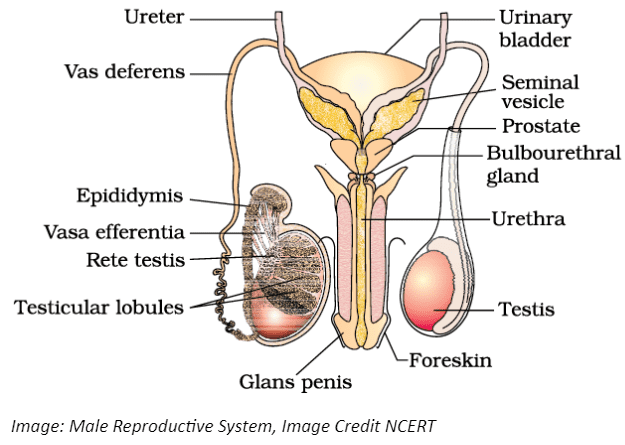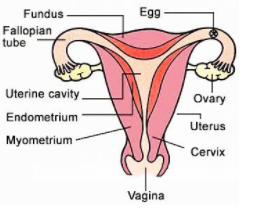Differences Between Male and Female Reproductive Systems with Diagrams
The human reproductive system is a collection of organs and structures that enable humans to produce offspring and ensure the survival of the species. This complex system is responsible for the creation and fusion of gametes—specialized reproductive cells—from each parent, followed by the development of a new life.
In humans, reproduction happens sexually, involving a male and a female. Each individual's reproductive system develops gradually, with major differences established at the genetic level during fertilization. Although all embryos appear similar in the earliest stages, distinct male or female characteristics develop over time due to genetic instructions.
Development of the Human Reproductive Organs
The sex of a child is determined at the moment when a sperm fertilizes an ovum. Chromosomes found in these cells establish whether the developing embryo will become male or female. In early development, there are no visible differences between male and female embryos during the first eight weeks inside the uterus.
This is called the neutral or indifferent stage. At this stage, only a study of the chromosomes can reveal genetic sex. As development continues, the gonads (organs that produce gametes) begin to differentiate: gonads for testes appear first, followed by those that will become ovaries if the embryo is female.
Both male and female embryos initially have four ducts. The mesonephric (wolffian) ducts will develop into parts of the male reproductive system, while the paramesonephric (müllerian) ducts form essential parts of the female reproductive system. These transformations give rise to the anatomical differences seen in adult males and females.
Structure and Main Parts: Male and Female Reproductive Systems
As the embryo develops, primitive external genital organs begin to form. In males, these become the penis and scrotum. In females, they develop into the vulva, which includes the clitoris, labia, and the vestibule of the vagina.
At birth, all main reproductive organs are formed and in place, though they are not yet active. The organs grow slowly during childhood, becoming functionally active at puberty—a period marked by rapid change and the development of secondary sexual characteristics.
| System | Main Organs | Primary Function |
|---|---|---|
| Male | Testes, Epididymis, Ductus (Vas) Deferens, Seminal Vesicle, Ejaculatory Duct, Penis, Scrotum | Sperm production, hormone secretion, delivering sperm to female tract |
| Female | Ovaries, Fallopian Tubes, Uterus, Vagina, Vulva (clitoris, labia) | Egg production, hormone secretion, nourishing and supporting embryo/fetus |

Understanding the structure and connection between these organs is important for recognizing how the male reproductive system functions. For detailed explanations, refer to male reproductive system.

The female reproductive system also involves several interconnected organs that provide an environment for fertilization of the egg and subsequent growth of the fetus. You can explore more about this at female reproductive system.
Biological Processes and Changes
Usually, reproductive organs remain inactive during childhood. Puberty is the stage when hormonal signals cause these organs to grow and become active.
For males, puberty brings enlargement of the testes and penis, development of the ability to ejaculate, deepening of the voice as the larynx grows, and new body hair in areas like the face, chest, and pubic region.
In females, puberty marks the start of menstruation as the uterus becomes active. The external genitalia and breasts enlarge, and there is a noticeable increase in body fat on the hips and thighs. Hair growth in the armpits and pubic area also becomes more pronounced.
| Puberty Change | Male | Female |
|---|---|---|
| Organ Growth & Activity | Testes and penis enlarge; sperm production starts | Uterus starts menstruation; breasts develop |
| Other Physical Changes | Voice deepens; facial/body hair appears; skin glands more active | Body fat increases; pubic and axillary hair become thicker |
Genetics and Sex Determination
The specific set of chromosomes inherited from each parent determines whether an embryo will become male or female. Differences are not evident externally in the early embryo but appear as various ducts and genitalia develop according to genetic instructions.
In males, the mesonephric (wolffian) ducts transform into ducts of the epididymis, vas deferens, ejaculatory duct, and seminal vesicle. In females, these ducts are mostly suppressed, while the paramesonephric (müllerian) ducts develop into the fallopian tubes, uterus, and part of the vagina.
For a better understanding of sex determination and related biology, visit sex determination.
Scientific Significance and Health Considerations
Proper development of the reproductive organs is crucial for fertility and health. Sometimes, chromosomal or developmental issues may result in conditions such as hermaphroditism (having both male and female traits) or other reproductive system disorders.
A healthy reproductive system is also important for general body development during adolescence and for the individual's overall well-being. Education about reproductive health and its function is an essential part of biology and personal growth.
For more detailed information on reproductive system health, please refer to reproductive health and reproductive system diseases.
Practice and Next Steps
- Label diagrams of both male and female reproductive systems for clarity.
- Compare and contrast how reproductive organs develop in males and females.
- Trace the changes that occur in the body during puberty.
Key Vedantu Resources for Further Learning
- Female Reproductive System
- Male Reproductive System
- Sex Determination
- Sexual Reproduction and Reproductive Systems
- Reproductive Health


FAQs on Human Reproductive System Explained for NEET, CBSE & ICSE
1. What is the human reproductive system?
The human reproductive system is a series of organs and glands that enable humans to produce offspring through sexual reproduction. It includes the male reproductive system (testes, vas deferens, penis) and the female reproductive system (ovaries, uterus, fallopian tubes, vagina). These systems are responsible for gamete formation, fertilization, and development of a new individual.
2. What are the main organs in the male reproductive system?
The main organs in the male reproductive system are:
- Testes: Produce sperm and testosterone.
- Epididymis: Stores and matures sperm.
- Vas deferens: Transports sperm.
- Seminal vesicles & prostate gland: Produce seminal fluid.
- Penis: Delivers sperm to the female system.
3. What are the main organs in the female reproductive system?
The main organs in the female reproductive system are:
- Ovaries: Produce ova (eggs) and hormones.
- Fallopian tubes: Site of fertilization and transport eggs to uterus.
- Uterus: Supports development of the fetus.
- Cervix: Connects uterus to vagina.
- Vagina: Receives sperm and acts as the birth canal.
4. What is the function of the human reproductive system?
The main function of the human reproductive system is to ensure reproduction and continuation of the species. It achieves this by:
- Producing and maturing male and female gametes
- Facilitating fertilization of eggs by sperm
- Supporting fetal development during pregnancy
- Enabling childbirth and nurturing young after birth (in females)
5. How do the male and female reproductive systems differ?
The main differences between male and female reproductive systems are:
- Male system: Produces millions of small, motile sperm; organs are partly external.
- Female system: Produces fewer but bigger, non-motile ova; organs are internal.
- Hormones: Testosterone dominates in males; estrogen and progesterone in females.
- Fertilization: Occurs inside the female body.
6. What is the menstrual cycle, and what are its main events?
The menstrual cycle is a monthly series of changes in the female reproductive system preparing for possible pregnancy. Main events include:
- Menstrual phase: Shedding of the uterine lining (days 1–5).
- Follicular phase: Growth of follicles and endometrium (days 6–13).
- Ovulation: Release of a mature egg (around day 14).
- Luteal phase: Preparation for implantation (days 15–28).
- If fertilization does not occur, the cycle repeats.
7. What is spermatogenesis and where does it occur?
Spermatogenesis is the process of sperm formation in males. It occurs in the seminiferous tubules of the testes. This process involves:
- Division and maturation of germ cells (spermatogonia)
- Production of mature, functional sperm cells
- Regulation by hormones such as testosterone and FSH
8. What is oogenesis and where does it occur?
Oogenesis is the process of ovum (egg) formation in females. It takes place in the ovaries. Key points include:
- Starts before birth, but matures during puberty and menstrual cycles
- Each menstrual cycle, typically one ovum is released
- Regulated by hormones like FSH and LH
9. What are common reproductive system diseases or disorders?
Common reproductive system diseases or disorders include:
- Infertility: Difficulty in conception due to various causes.
- Polycystic ovary syndrome (PCOS): Hormonal disorder affecting females.
- Sexually transmitted infections (STIs): Infections like HIV, syphilis, gonorrhea.
- Endometriosis: Growth of endometrial tissue outside the uterus.
10. Which organ carries a baby in the female reproductive system?
The uterus, also known as the womb, is the organ in the female reproductive system where the fertilized egg implants and the baby grows during pregnancy. It supports and nourishes the developing fetus until birth.
11. What hormones regulate the human reproductive system?
Key hormones regulating the human reproductive system are:
- In males: Testosterone, FSH (follicle-stimulating hormone), LH (luteinizing hormone)
- In females: Estrogen, progesterone, FSH, LH
- These hormones control gamete production, the menstrual cycle, and reproductive organ functions.
12. Why is the study of the human reproductive system important for NEET and board exams?
The human reproductive system has high importance in NEET and board exams because:
- Questions frequently test knowledge of structure, function, diagrams, and processes.
- Understanding reproductive health, disorders, and hormonal regulation is essential for medical studies.
- Topics align directly with CBSE, ICSE, and NEET syllabus objectives.










